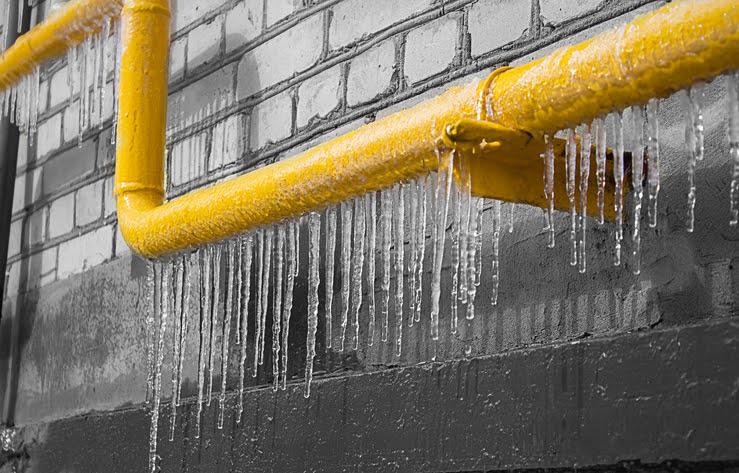Essential Methods for Avoiding Frozen Plumbing in Cold Weather
Essential Methods for Avoiding Frozen Plumbing in Cold Weather
Blog Article
This article below on the subject of How to prepare your home plumbing for winter weather is relatively interesting. Don't bypass it.

Winter can ruin your plumbing, specifically by freezing pipelines. Below's how to stop it from occurring and what to do if it does.
Introduction
As temperatures drop, the threat of icy pipelines boosts, potentially resulting in expensive repair work and water damages. Comprehending how to prevent icy pipes is important for property owners in chilly climates.
Avoidance Tips
Insulating at risk pipes
Cover pipelines in insulation sleeves or make use of warmth tape to protect them from freezing temperatures. Focus on pipelines in unheated or exterior locations of the home.
Home heating methods
Maintain interior areas appropriately heated up, specifically areas with pipes. Open up cupboard doors to enable cozy air to circulate around pipes under sinks.
How to identify icy pipelines
Search for reduced water flow from taps, uncommon smells or sounds from pipes, and visible frost on revealed pipelines.
Long-Term Solutions
Architectural adjustments
Take into consideration rerouting pipelines far from exterior walls or unheated locations. Include additional insulation to attic rooms, cellars, and crawl spaces.
Updating insulation
Invest in high-grade insulation for pipes, attics, and walls. Proper insulation assists preserve regular temperatures and decreases the risk of icy pipes.
Shielding Outdoor Plumbing
Garden pipes and outdoor taps
Separate and drain yard tubes prior to winter months. Install frost-proof spigots or cover exterior taps with shielded caps.
Recognizing Icy Pipes
What causes pipes to ice up?
Pipes freeze when subjected to temperature levels below 32 ° F (0 ° C) for prolonged periods. As water inside the pipes ices up, it broadens, putting pressure on the pipeline walls and potentially triggering them to break.
Threats and problems
Icy pipelines can result in water system disturbances, building damages, and pricey fixings. Burst pipes can flood homes and create extensive structural damage.
Signs of Frozen Pipeline
Identifying icy pipelines early can stop them from rupturing.
What to Do If Your Pipes Freeze
Immediate activities to take
If you think frozen pipes, keep taps open up to eliminate pressure as the ice thaws. Use a hairdryer or towels taken in hot water to thaw pipes slowly.
Conclusion
Avoiding icy pipelines calls for aggressive measures and fast reactions. By recognizing the causes, indications, and safety nets, house owners can shield their plumbing during winter.
5 Ways to Prevent Frozen Pipes
Drain Outdoor Faucets and Disconnect Hoses
First, close the shut-off valve that controls the flow of water in the pipe to your outdoor faucet. Then, head outside to disconnect and drain your hose and open the outdoor faucet to allow the water to completely drain out of the line. Turn off the faucet when done. Finally, head back to the shut-off valve and drain the remaining water inside the pipe into a bucket or container. Additionally, if you have a home irrigation system, you should consider hiring an expert to clear the system of water each year.
Insulate Pipes
One of the best and most cost-effective methods for preventing frozen water pipes is to wrap your pipes with insulation. This is especially important for areas in your home that aren’t exposed to heat, such as an attic. We suggest using foam sleeves, which can typically be found at your local hardware store.
Keep Heat Running at 65
Your pipes are located inside your walls, and the temperature there is much colder than the rest of the house. To prevent your pipes from freezing, The Insurance Information Institute suggests that you keep your home heated to at least 65 degrees, even when traveling. You may want to invest in smart devices that can keep an eye on the temperature in your home while you’re away.
Leave Water Dripping
Moving water — even a small trickle — can prevent ice from forming inside your pipes. When freezing temps are imminent, start a drip of water from all faucets that serve exposed pipes. Leaving a few faucets running will also help relieve pressure inside the pipes and help prevent a rupture if the water inside freezes.
Open Cupboard Doors
Warm your kitchen and bathroom pipes by opening cupboards and vanities. You should also leave your interior doors ajar to help warm air circulate evenly throughout your home.

We hope you liked our article about Winter Plumbing Precautions: Preventing Frozen Pipes. Thank you for finding the time to read our article post. Enjoyed our blog posting? Please share it. Let somebody else locate it. Many thanks for taking the time to read it.
Call Today Report this page